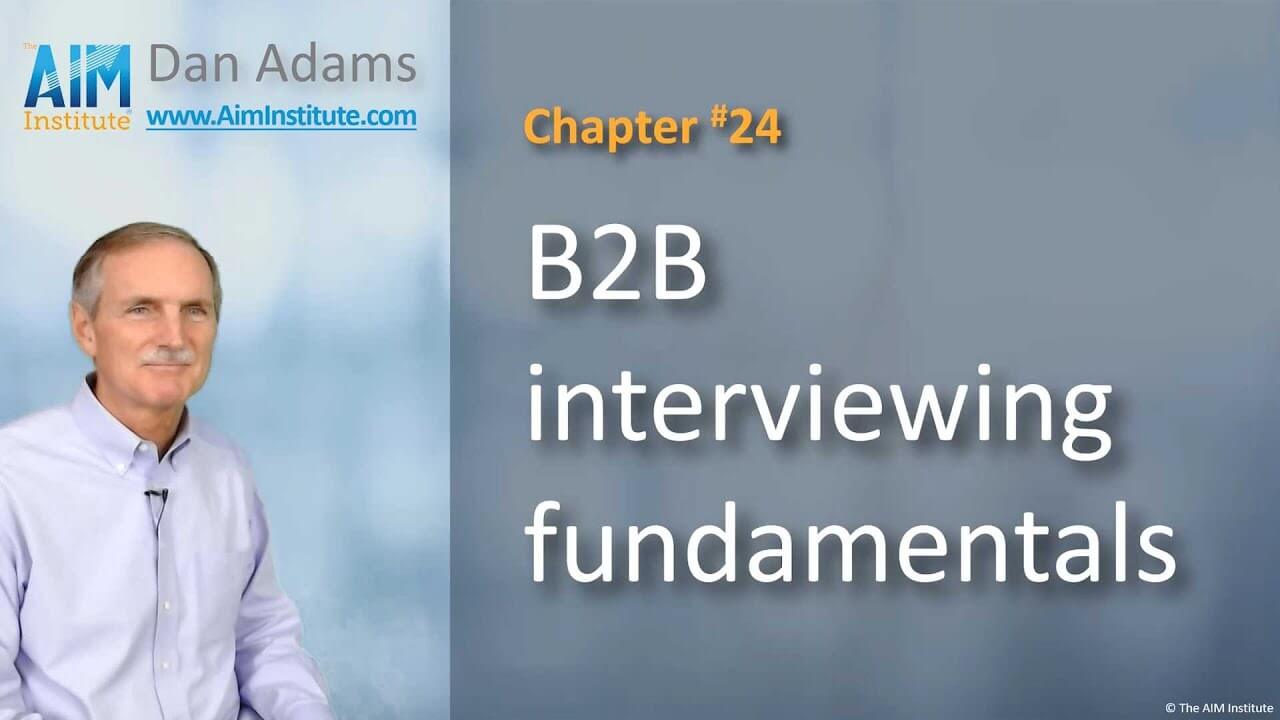B2B Organic Growth Series: Chapter #24
B2B Interviewing fundamentals

Subscribe to the series. Get 50 free videos, sent daily or weekly.
B2B interviewing should be very different than B2C. These methods help you eliminate most errors of omission (using divergent interviews) and errors of commission (convergent interviews).
b2bgrowth.video/24 Video length [2:30]
Transcript of Chapter 24
I’ve been talking about B2B customer interviews in past videos. But what are we trying to learn? Who conducts the interviews? Who do we interview? And how?
We’re trying to learn all we can about customers’ desired outcomes, and we do this with a round of Discovery interviews followed by Preference interviews.
Discovery interviews are qualitative, where you seek as many customer outcomes as possible. Your paint customer might ask for better hiding power, scrub resistance and crayon removal.
Preference interviews are quantitative. You ask customers to rate outcomes for importance and current satisfaction… hoping to find something important and unsatisfied: Otherwise, your new product cannot get a price premium.
So first you diverge to all possibilities. Then you converge on those that matter most. This stops the two main innovation errors: Errors of omission… failing to uncover an unarticulated market need. And errors of commission… choosing the wrong needs to pursue.
Your interview team includes a moderator, to lead and do most of the probing… a note-taker, who also probes… and an optional observer. A typical team might include marketing, technical and sales.
Next, think of the companies you want to interview, and the job functions in those companies. Existing, former and prospective customers… co-suppliers… consultants… regulators… and your customers’ customers. Interview a broad range of job functions in these companies, to get as much diversity as possible.
When you interview, do so with groups of customer contacts, not individuals, so they can build on each other’s ideas. As they debate each other, you’ll learn much.
Make the interview highly visual, displaying your notes with a digital projector or web-conference. Customers will correct your notes and feel you’re treating their ideas with respect.
Drop your questionnaire and let the customer lead the interview. They’ll bring up what’s most important to them, and will feel much more engaged. If that sounds intimidating, hang in there. We’ll talk more about this in coming chapters.
Comments